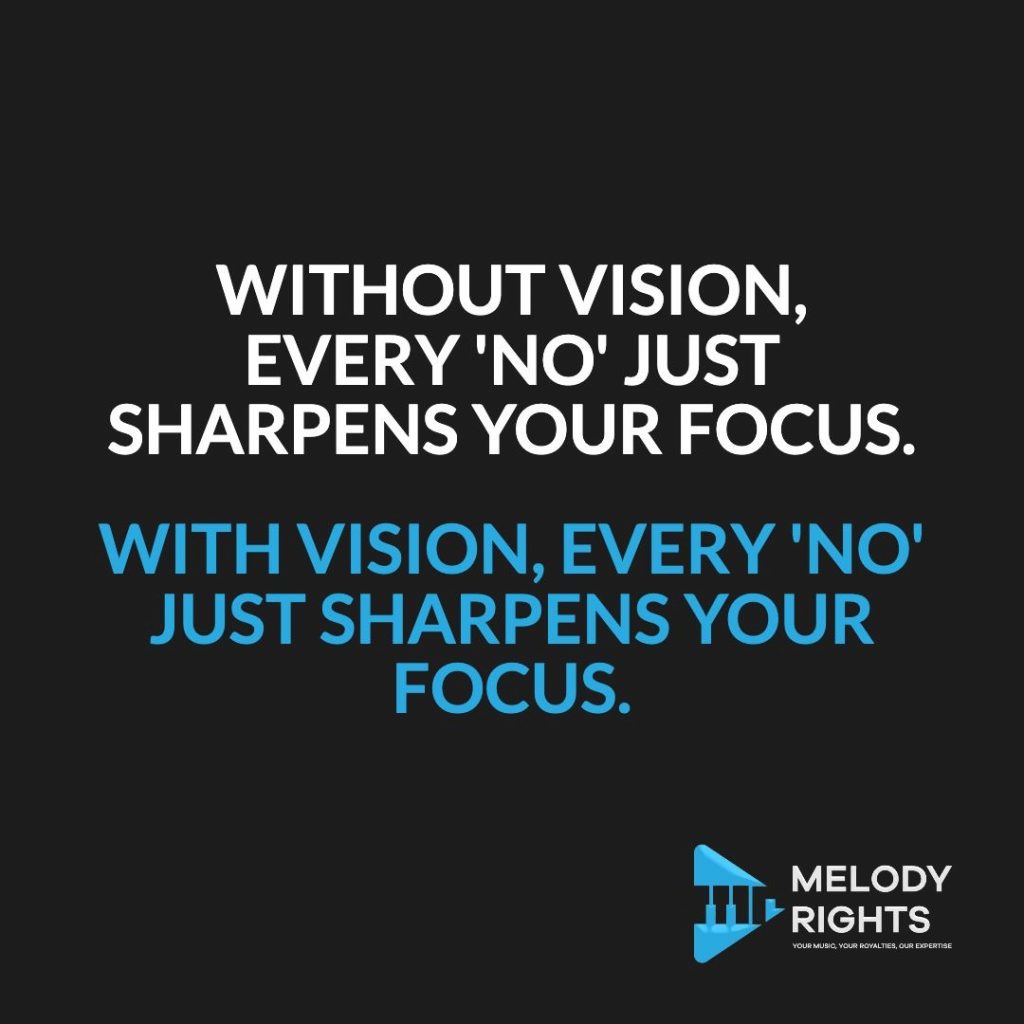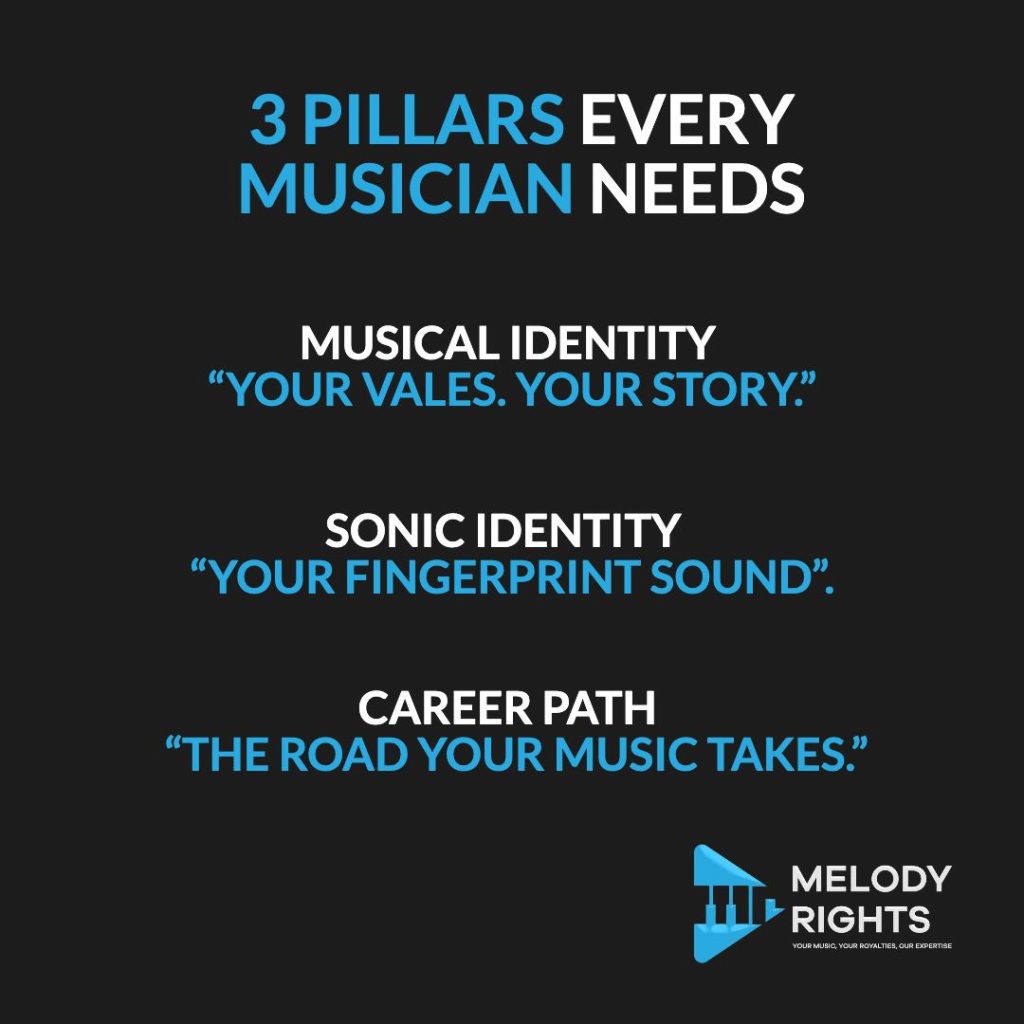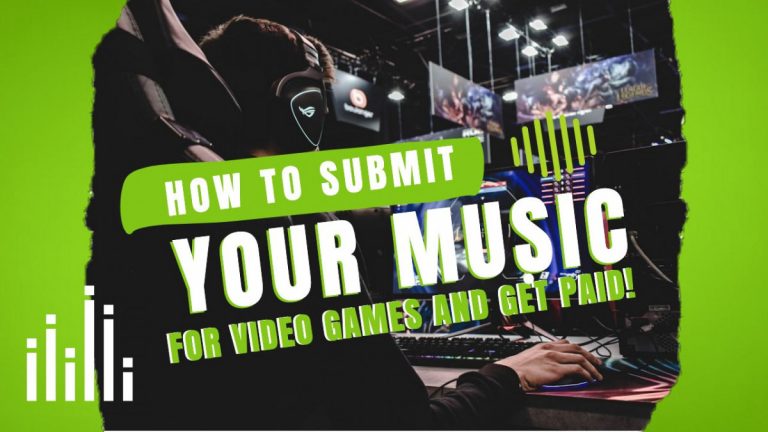Table of Contents
ToggleTL:DR/ Quick Answer: Musician Mindset and Vision Explained
A musician mindset is what keeps you steady when the world says no. Your vision rests on three parts:
- Musical identity: the values and story that drive your art
- Sonic identity: the sound that makes people recognize you in seconds
- Career path: the direction that turns your hustle into a lasting career
When these three are clear, rejection doesn’t stop you, it shapes you.
Why a Musician Mindset Starts With Vision
In 1979, Michael Jackson scribbled a note on the back of a tour itinerary. He called it his manifesto. In that note he wrote,
“I will be magic. I will be a perfectionist, a researcher, a trainer, a masterer. I will change the way people see me.”
This wasn’t a checklist; it was a vision. He was only 21, still known as the kid from the Jackson 5, yet he put in writing the artist he intended to become, and then he lived it.
Most musicians don’t give up because they lack talent. They give up because they never built a vision strong enough to carry them through rejection, comparison, and the grind of daily work. Vision is what keeps you steady when the world says no.
For independent artists, your vision rests on three pillars:
- Musical identity: the values and story that drive your art.
- Sonic identity: the sound that makes people know it’s you within seconds.
- Career path: the direction that turns your hustle into a lasting career.
This post will walk you through how to define all three, so when gigs flop, syncs ghost you, or algorithms bury your work, you don’t drift. Instead, you’ll stay grounded and keep moving toward the artist you are meant to be.
Musician Mindset: Why Vision Stops Musician Burnout
Your music is your gift. It’s the way you were built to express yourself in this world, the part of you that feels most authentic and alive. That calling doesn’t disappear just because a gig falls through or a trend moves on.
But the grind of the industry can wear you down until you stop hearing it. Algorithms change, doors close, opportunities vanish overnight, and every “not a fit” feels like proof you don’t belong. Over time, the weight of rejection and comparison can smother the joy of creating, until self-doubt (your own or someone else’s) convinces you to walk away from the dream.
Vision is what protects you from burnout and keeps your musician mindset steady, so the noise of the industry doesn’t drown out the truth of your gift. With vision, the storms don’t steal your voice. They just become part of the journey.

Filename: musician-vision-quote-melody-rights.png
Alt Text: Inspirational quote image for musicians about building vision with Melody Rights branding
Caption: Vision is what keeps musicians moving forward when rejection comes.
Description: Melody Rights branded social media graphic featuring the quote “Without vision, you drift. With vision, you drive.” Designed in dark grey and electric blue with bold typography to inspire independent artists.
What Is a Music Vision? 3 Pillars Every Musician Needs
Vision isn’t a mission statement you put on a website. It’s the thread that ties you back to your deepest reason for making music, even when everything around you shifts.
At its core, your vision has three parts:
- Musical identity: the values you stand for, the story only you can tell, the way your music reflects the truth of who you are.
- Sonic identity: your fingerprint, the tones and textures that make someone hear a few seconds and know it’s you.
Indie artist Spencer Segelov learned this lesson the hard way. Over nine albums, he explored everything from folk to chamber orchestra arrangements. His biggest advice looking back?
“Never change genre with each album if you want to build a fanbase. People say they are into all sorts of music, which may be true, but they do not like to see the same artist playing too many different genres abruptly. They can better handle a gradual change.”
Spencer’s experience shows how a scattered approach can confuse listeners, while a clear sonic identity helps fans recognize and stick with you across the long haul.
- Music career path: the road that carries your work into the world, whether that’s sync, touring, composing, teaching, or building a community release strategy.

When you’re clear on these, you’re not just “finding your sound.” You’re planting a flag. Your music vision is what steadies you when trends flip or algorithms bury your track. It’s the part of you that doesn’t bend when everything else feels uncertain.
And you don’t have to hold it all in your head. Tools like vision boards and artist statements help lock it in. Even Spotify’s artist team reminds creators that visual identity is one of the strongest ways to connect with listeners.
How to Create a Music Vision Statement in 8 Steps
1. Ground your musician mindset
Rejection is part of this path. Write down every “no” you’ve carried.
Finish this sentence: “Even with this, I choose to keep making music because…”Every time you return to that line, you remind yourself that the “no’s” are not the end. They are proof you stayed in the game.
Once you know why you are still here, the next step is to define who you are through your music.
2. Clarify your musical identity
Name five values your music must honor.
Ask what you want people to feel when they hear you.
This becomes your compass when you start to drift. Without values, you’ll bend to trends. With them, your art has a spine.
When your identity is clear, the question becomes: where do you want this music to live.
3. Map your music career path
Map your musician career path. There are many career paths in music – touring, sync, composing, teaching. The right music career pathways are the ones you can commit to long enough to make a mark.
Look five or ten years ahead. Choose where your music lives, and commit long enough to make a mark.
Stages, film and TV, games, teaching, community releases – pick a lane with intention. When you choose, you build momentum instead of scattering your energy.
Big goals are powerful, but they need something tangible to keep them alive. That is where your artist statement and vision board come in.
4. Write your artist vision statement (often called a music vision statement), then make a moodboard.
Write in the present tense: “I am an artist who…” Keep it honest.
Build a vision board with images, colors, and words that feel like your sound. This isn’t decoration, it’s direction. On the days you lose focus, the board will bring you back to yourself.
Once you have put your vision into words and visuals, it is time to make sure the people around you are helping, not holding you back.
5. Audit your band, and your front row
List the people closest to your process, those who fuel you, who drain you.
Keep the first close, set boundaries with the second. The wrong voices will chip away at your belief and the right ones will protect it.
Even with the right circle, the grind can wear you down. Rituals become the glue that keeps you consistent.
6. Build grind rituals
Create tiny practices that stack: twenty minutes most days, a quick read of your statement before the DAW, a pre-show mantra.
Try this: “My music matters, even when nobody claps.” These rituals prove you’re serious. They turn bursts of hope into steady discipline.
Daily rituals build momentum, but momentum sticks best when someone else is keeping you accountable.
7. Stay accountable
Choose one peer or mentor who wants to see you win.
Do a monthly check-in: what you finished, where you’re stuck, what’s next. Accountability is the bridge between your vision and your consistency.
When you are grounded, consistent, and supported, you are ready to ask the biggest question: what legacy do you want your sound to leave behind.
8. Define your sonic legacy
Ask what you want people to say about your sound twenty years from now.
That answer is your sonic identity, the fingerprint you leave behind. When you play with legacy in mind, every track becomes part of your story. This is real goal setting for musicians – not just chasing trends, but building something lasting.
Case Study: How Vision Fuels a Musician’s Career Path
Bobby Cole didn’t set out to build a music company.
He started the same way most independent artists do, behind a drum kit, chasing placements, juggling side jobs, and carrying the fear that music might not work out.
The easier road would have been a call centre or a bar job. The harder road was sticking with music anyway. He chose the harder road.
His first royalty check was just £22. It was not much, but it was proof. Proof that the system worked if the registrations were in place.
That check became his anchor. Every setback after that, the missed placements, the side hustles, the failed ventures, was measured against that small but real reminder that music could pay.
That vision, to live through music no matter what, is what carried him. It gave him the persistence to keep creating, and later, to build Melody Rights so other artists would not have to lose years of income to admin gaps.
The point is not the company. The point is the vision. Without it, Bobby could have walked away. With it, he turned small proof into a long game.
If you want to see how that plays out in real earnings, check out How to Make Money as an Independent Artist on our blog. -It shows you where income really comes from when vision meets the right systems.
→ https://melodyrights.com/how-to-make-money-as-an-independent-artist
Your story might not look the same, but the principle is identical. Vision is not hype. It is the difference between letting the industry wear you down and finding a way to keep going until the work pays off.
Music Royalties and Vision: How Independent Artists Make It Last
A vision is personal, it comes from who you are and why you create, but living it day to day also means facing the unglamorous side of music. Rights, registrations, royalties ( and the unclaimed royalties that so many independent artists miss) are the invisible steps that decide whether your work earns or disappears into the noise. Too much unclaimed music royalties are left on the table every year, and we built Melody Rights to change that.
That is where Melody Rights comes in. We are not here to own your music or replace your distributor. Think of us as the co-pilot that makes your vision sustainable. You bring the music and the direction, we make sure the back end supports it.
With Melody Rights you can:
- Submit your tracks for sync in film and TV as well as games and ads.
- Register your rights and metadata properly so opportunities never slip away.
- Track master and publishing royalties in one clear dashboard.
- Keep control of your catalog while adding new revenue streams.
That’s the real power of clarity, it’s not only knowing who you are as an artist, it’s putting systems in place that keep you steady when the storms hit so your music, your vision, and your future don’t get washed away.
Why Musicians Burn Out Without Vision (And How to Stay Grounded)
Your vision isn’t just words on a page. It’s the part of you that won’t quit, the thread that ties your music to the reason you started creating in the first place. It comes alive through your musical identity, your unique sound, and the path you choose to carry your songs into the world.
The music industry will test you. Doors close, algorithms shift, shows get cancelled, sync pitches fall silent. Those are the moments vision matters most. When it’s tied to your purpose and rooted in the most honest part of who you are, it doesn’t break.
Michael Jackson wrote his vision down long before the world believed it. That same clarity is available to you. Your vision doesn’t need a stadium to be real. It needs you to claim it and live it.
And while you carry that vision, you don’t have to handle every detail alone. That’s why Melody Rights exists – to protect your music, simplify the admin, and make sure your vision has the support to last.
FAQs
How do I stay motivated as a musician after rejection?
Stay focused on your vision. A clear purpose makes rejection feel temporary, not final.
What does a music vision statement look like?
One or two sentences in the present tense: “I am an artist who…” State who you are and what your music stands for.
What is the difference between musical identity and sonic identity?
Musical identity is your values and story. Sonic identity is the unique sound that makes people know it’s you.
Can independent musicians succeed without a label in 2025?
Yes. Many indie artists succeed by managing rights, royalties, and distribution themselves.
How does having a vision help with musician burnout?
Vision keeps you tied to your purpose, so setbacks don’t feel like proof you should quit.
What tools help indie musicians stay consistent?
Journals, accountability partners, and admin tools like Melody Rights help you stay focused on creating.



